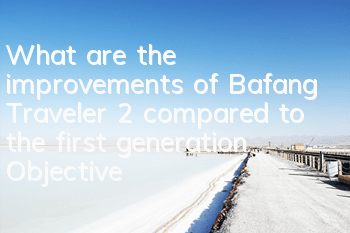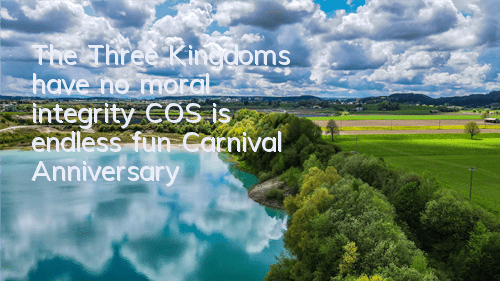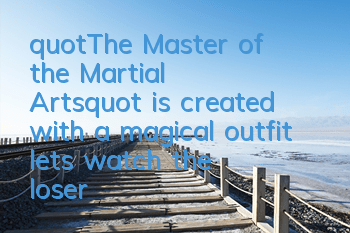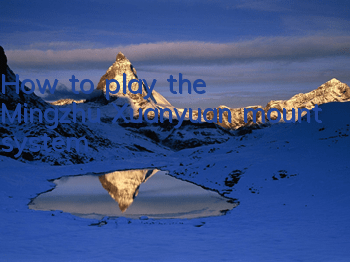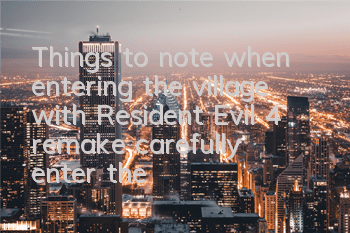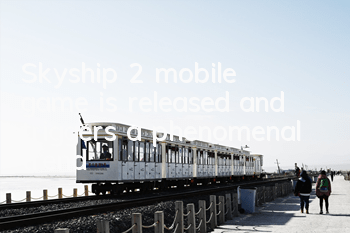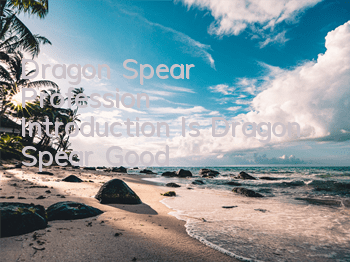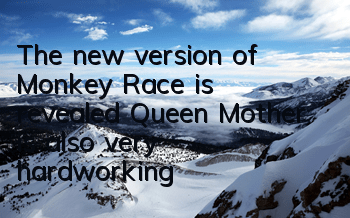"Tell us again, the story of the warriors of light."
In the 1980s, Japan, which completed post-war industrialization at a rapid speed, was coated with a layer of exaggerated gold edge from the inside to the outside.
This is an era when Japanese people think they can pick up a few pieces of money by taking two steps on the street.
But life is not easy to have a small company that sprouted during this period.
They buried their heads in developing several games in succession, just like the little stone thrown into the sea, and failed to cause many waves in the game market at that time.
"Try it again, if you can't do it, just admit your career change."
The producers and teammates named Hiroshi Sakaguchi said so.
In 1987, the results of "trying another move" appeared before the world.
This is a brave adventure story that seems quite "kingly" today. Four Light Warriors stood up in the declining world and assembled into a team of brave men, fighting fiercely with the forces behind the scenes trying to drown the world during a long adventure.
Unlike the RPGs that revolve around a single protagonist that were popular in Japan at that time, such as Dragon Quest, which revolves around a single protagonist, the protagonist of this RPG is more inclined to be a whole team - players can freely define the profession of the team's role, and can also change to a senior profession after meeting the conditions. This also brings a lot of playability in teamwork and development.
You should have guessed it long ago, it is the original Final Fantasy.
Look, does "The Traveler of the Road" that we first met quite similar to it?
In fact, there is a buddy named "Courage of Courage" who is also very similar, and was once entrusted by SE to revitalize the glory of the PSP era; both of them are Master Nishiki Yasutoshi, and there are many things to follow in terms of picture style to gameplay.
To be honest, in the context of the "Final Fantasy" series being highly anticipated by Square Enix, gradually becoming more and more "heavy", and completely becoming an "action-oriented" "Final Fantasy 16", the existence of the "Far Road Traveler" series, to me, is like an indispensable branch of the sky tree of SE.
What it wants to fill with the former "Courage Apocalypse" is the classic RPG experience that the former "Final Fantasy" series brings to players, and the team's adventure-based, turn-based gameplay.
This also brought some sweet troubles to the evaluation work - plus the concave level, after walking on the map and scanning the map, "Travel Traveler 2"》's game experience process is very exciting...it was pulled for a long time, so that although I still have two protagonists' stories that have not been experienced, the game progress has reached more than 30 hours.
Although I haven't had time to knock out the final hidden boss, the difficult content has been experienced so far. Due to time limitations, let me start talking to you from this progress, "The Traveler of the Road 2" in my eyes.
Plot, Story, Character, and Innovation
"The Forbidden Traveler 2" inherits the world view of the previous work, but what is interesting is that in the process from 1 to 2, the timeline is also quietly progressing. The most obvious one is the "steam engine" and the elements of navigation in the businessman's plot. Irresponsible speculation, maybe in "The Traveler of the Road 3", a weapon like a musket will appear?
"The Traveler 2" also has eight protagonists scattered all over the world. By the way, like the first generation, the first letters of the eight protagonists in this work can be spelled into "OCTOPATH", probably a series of easter eggs that will continue.
Like the first generation, "The Traveler 2" inevitably has a "pizza-segment" effect due to the number of protagonists, and each character can only obtain a very limited amount of the main line cost of four to five chapters.
As such a limited space, it is necessary to complete the beginning, inheritance, transformation and completion of a character story, and also to lay the foreshadowing and design suspense. The screenwriter should feel quite like dancing in shackles.
To be fair, I do not think that the main story of each character has reached the "exciting" line.
This has nothing to do with my personal taste, but it is purely caused by the story structure - although it is "eight directions", there are still quite different materials for the main story between travelers and travelers.
For example, the plot line of the swordsman "Light" tells a very classic prince's revenge drama. After being deprived of his identity and expelled from the country by his elder brother, the former prince traveled to the mainland, summoned his friends, and in the process, he constantly confronted the will of others to consolidate his ideas.
The most "routine" main plot is also the most mature personal plot in my opinion.
In this line, you can see Li Jin like a prince's shadow: he, who was born in a civilian family, has truly experienced the pain of continuous wars provoked by the Ku State, and has suffered from the pain of losing relatives at a young age, with outstanding swordsmanship and a tenacious heart, but the things they pursue and the ideas they uphold were very different from the beginning;
We can also experience the wonderful feeling of "being like this for the king" from the process of recruiting partners step by step. Xiashan, a strategist who seemed to be careless but had far-reaching plans, regarded the family continuation as his mission, and once completely abandoned his own Ming Lei. Although the friends of these two princes did not focus much., but they also show their character charm in their respective chapters;
(I like the enemy styling design of "The Traveler of the Road 2". From the pixel villain during the conversation, I jumped into a cruel and distorted image, or a heroic image. In conjunction with the battle of BGM, the atmosphere of the Battle of Destiny suddenly came out. Sister Lei Ming is really cool and beautiful!)
There are even retainers who are loyal to Hiroshi, known as "Benkei", - in our world line, there is also a pair of masters with stories similar to them but with completely opposite ends. It's obvious that he is pinched, but it's quite fragrant.
You see, although there are still many regrets in the five chapters of Swordsman Light due to limited space (for example, as one of the origins of everything, the elder brother has almost no unfolded in the end, and he just left the scene in the final chapter), but in the structure of a Prince's Revenge drama, the elements that should be possessed are basically not absent.
And on this basis, the protagonist's shaping also makes me feel very comfortable. Although he thinks that "everyone is equal" and is a rigorous and serious student, he has a very tough and unyielding side.
When he was "designed" by Xiashan, he knew how much bloody smell would be here next, but he drew his sword and fought with the gladiator without any retreat. When facing his former close friend's stubborn sword blocking the road, after repeated persuasion, he would not hesitate to leave the ruthless words "If you don't let go, I will draw my sword".
Comfortable, it's so comfortable. There are many scenes in the plays of Prince Revenge that make people feel stomach-wrenching. I don't want to step on one hand, but the main plot of Guang is definitely the most comfortable prince revenge drama in recent years.
Conversely, as the "strongest group member" that the group members praised during the land reclamation stage, her main storyline is not as capable as light, and the main storyline is also the simplest and straightforward "Pokemon". The general basic process of collecting partners going back to fight the big boss's RPG task. The highlight of the plot itself is far from the performance part, and can only be described as plain and sensible.
But this has nothing to do with my favorite Oshuti. She is everyone’s little angel!
Compared with the two examples that give me the biggest difference in experience, the plots of other characters are difficult to evaluate in a few short sentences.
"I want to help the poor people in this world. If you have good things, you should share them with everyone."
The young businessman Pattio, who is frank and proud and proud, uses the proud silver leaf coins he produces as his business card, keeps moving forward. His story is undoubtedly golden;
"Fuck up with the smell of blood. I want to win freedom... I have to kill "██" and "██" for this.
Far away from the "black snake", and embark on a journey alone from the foggy morning, chasing the freedom of the thief Snoni. Her story is full of stomach-wrenching elements, and the dark side of the world revealed, presenting a messy dark purple tone;
"Go all your efforts to save one more person, this is the Jishi Pharmacist Group."
Along the journey of retrieval, even if you forget your memories, you will still follow the stories of Casty and her companions who instinctively help others. It is a gentle and firm blue;
"Harvey, I must kill you."
All things in life were taken away by his former close friend, and Ozbardo, who struggled to escape after being imprisoned, opened like the tone of "The Earl of Monte Cristo", wrote a silver-gray revenge drama that constantly intertwined and intertwined.
(The priest and dancer's personal line have not been cleared yet, so he will not force his performance)
Compared with the evaluation of "good" or "bad", I think that the plot of each protagonist is actually very radio-wave-for example, what I like most is the plot of a businessman, but some group members also have the lowest evaluation of this story.
But no matter what, everyone's story has a very obvious stylized structure, which also brings completely different colors to the entire game. Every character shines with his own destiny, raises the anti-flag, and blooms his faith, just like the warriors of light who have saved worlds.
In addition, it seems to be in response to the players' jokes about the generation of "laughing at the sky and pushing the door, it turns out that teammates are passers-by", "The Forbidden Road Traveler 2" has added a new story mode of "two-player plot", with eight protagonists teaming in pairs, forming a total of four new stories (all divided into upper and lower parts, which is a total of 8 chapters).
However, unfortunately, the two-player plot has almost no connection with the main content, and it is more like the extra chapter of the protagonists' "a small episode that takes place on the journey". The main tone is still a relaxed and short unit drama. But the problem is that such a plot gives the same status as the main story in UI design as the main story, giving people a considerable sense of gap. Finally, I was quite disappointed when I was looking forward to some of the main story, which was close to the main story.
This may also be related to its functional similarity to the team story.
For dozens of hours traveling in the Forbidden Road Traveler 2, you will see similar conversations at many nodes.
At arriving at Corning Bay, where the sea breeze was blowing, Elicia gave Oshuti a sauteed meat and sauce to Oshuti, who had never eaten raw meat.
In the topic of "forgetfulness", Casti is full of Yu Yu's elder sister figureThe latter was panicked when she was drunk Pattio "this or that" to her.
Ozwald, who was driven forward by revenge and solution, his friends and his group kept talking to him.
These dialogues have actually played the role of "two-person story" and have very good results.
As for what kind of interactions should be between the eight characters to be "deep enough" to satisfy players, perhaps the screenwriter and planning team still need to make some careful consideration.
Show, picture, sound, details are too good
However, compared to evaluating the "plot", I want to seriously praise the ingenuity of "The Traveler 2" in the cutscene performance.
In terms of character dialogue, the writing style of "The Traveler of the Road 2" is very charming with the charm of a stage play. Although the "actor" is just a pixel villain with two or three heads, the details of the movements that should be had are not bad, and they can always develop the most familiar movements with the lines, making it feel like watching the drama when browsing the plot.
The "sensation of picture" or lens design when conducting the story is also a part of the dramatic evolution of this work based on the previous work.
Take the part where Pattiou went to various countries to purchase specialty products. What is given to the players here is a picture book performance that Pattiou has repeatedly crossed the territory against the backdrop of a passionate BGM. Under the intense rhythm, this interpretation strongly depicts the energetic state of young businessmen, which is very contagious.
In Pattiou's chapter, there are several chapters of the plot endings, which are explained in the form of newspaper headlines.
As well as the scene where the dancer came on stage to sing the song left by his mother, the whole set of movements of "dance" is indeed restored, and this song is also very nice.
Similar designs are actually not uncommon in this work. You will see this "one-time use" scene that is almost exclusively designed in the plot of each character. Even though I have played a lot of turn-based RPGs, I have been quite moved several times, "It turns out that the performances of cutscenes can still do this." It seems that the dot style also gives the performance a lot of room to play.
On the other hand, the plot of "The Traveler of the Road 2" is good because it has luxurious materials.
This is due to the luxurious lineup of this work (I won’t talk about the extremely subtle chemical reaction between the scholar Mapo voice actor and the villain of Zi'an Wuren), and on the other hand, it is also inseparable from the dramatic evolution of this work’s graphic expression.
Yes. Although it deliberately follows the dot map style of a generation, "The Traveler 2" has made considerable progress compared to the previous work in terms of picture details, especially the expressiveness of special effects such as ambient light effects, flames, and weather.
Pay attention to the outline of the bridge pillar being drawn by the light, andShadow tones that appear on the face of the character in the dark. This kind of fine effect is not uncommon in this work, and it is also one of the main reasons why people can feel the exquisiteness even though they are clearly a dot-matrix villain.
In addition to the new time elapsed system added in this game, even if time is not manually switched, the time on the map will still flow slowly (this mechanism is even related to the unlocking of some hidden powerful equipment). Therefore, when you run around every corner of the world, you can feel the changes of sunrise, sunset, and dusk, you can see the rippling moonlight on the lake in the distance, you can see the continuous railways in the development zone, and you can also feel the cold and cold wind in the disrepaired mine.
This always makes me feel like this: This is travel and adventure! 's feeling. It would be even better if you add a camping system and you can watch the characters interact with each other by the campfire.
In my opinion, the "Traveler" series, which was deliberately selected to draw a dot matrix, was made in the art presentation of this work, aiming at enhancing immersion and comfort. With the miniature landscape-like depth of field blur effect, most of the time, the pictures of "The Traveler 2" appear very delicate and pleasing to the eye.
Another point, although it is difficult to agree with some friends from the perspective of consumers that "the "Traveler 2" makes money by buying songs" - this game is indeed too expensive - but the soundtrack length of this work is 7 hours and 20 minutes, with a total of 131 BGMs. Each protagonist not only has his own theme song, but even the end of the plot has specially arranged a variation version of BGM, and all BGMs are arranged by Yasuto Nishiki. The performance on the soundtrack is still very good.
Not only that, this work is also done quite well on the details of "sound".
When fighting, a character successfully breaks defense/heals/buffs, or falls into a state where he cannot fight/severe injury, and his teammates will have corresponding feedback voices.
For example, Ozbardo made three monsters in one AOE, and Patotio, who will act next, will add, "Master, you're doing well!"
Or it may be that the enemy was completely defeated in one breath, and Casty, who moved the second time, would say "㊡ぱ, Hikariきみ (beautiful job, Hikari)".
When a special enemy fights, the character releases certain skills, or after charging and filling, it will also trigger special voices.
What impressed me the most here was the "Have--!!!" that was full of energy after Rioz Bardo was full of BP in a certain battle... Well, it shouldn't be considered a spoiler, right?
The combination of character voice and BGM in the combat stage is like a perfection of tomatoes and eggs. The atmosphere is "rubbing!" and it hits the forehead, making many BOSS battles that are not difficult in terms of mechanisms add to the texture of "decisive battle of fate".
But it's a bit ashamed. I really wanted to whisper more before, but when I picked up the pen, I thought that this was Square Enix, who won the Guinness World Record by relying on the soundtrack. It may use sound to deal with players. It's not too difficult for them (?)
(This picture can actually have a positive purpose, fun)
Fighting and team development: playability is focused on "monkey play"
Although it is luxurious in the plot and performance, the combat part is the real magic weapon that can keep players for dozens of hours.
In my opinion, this is also the part that "The Traveler 2" can best show its RPG texture. If "The Forbidden Traveler" is determined to innovate based on traditional Japanese RPG, then "The Forbidden Traveler 2", which generally follows the ideas of the previous work, further fills the blood and flesh called "interest" on this well-built framework.
Six physical attributes, six magic attributes, the Break mechanism corresponding to these attributes, and the attack/skill increase effect brought by BP points (Boost Point) have become the most core elements in this battle; and this mechanism particularly highlights a "easy to understand and difficult to understand" - when the enemy only has 2 shields, breaking the defense is very simple, and when the enemy often has more than a dozen shields in the later stage, how to allocate the BP points of each character has become a very challenging choice for the game's understanding;
On this basis, "The Traveler of the Road" also has a series of resources such as secondary professions, passive skills, and special effects weapons. If you do not study the game ideas provided by others to "copy the flip", the process of completing the game independently is actually quite challenging. It can be said that when you really start to study how to match passive skills, how to make good use of each character's BP points, and how to hoard resources to prepare for the explosion after breaking the defense, the battle link of this game has just begun.
Compared with the previous work, "The Traveler 2" also adds a "potential" system exclusive to each character. In combat, potential values will accumulate through attack, injury, and breaking defense. The potential skills that can be released after full accumulation do not require SP consumption, but can be linked to the increase in BP points, bringing immediate benefits to combat.
This also brings another new topic to the character's "balance". At present, the potential skills of the thief Snoni can give her one more action round, and in this game, which is extremely precious in the action round, there are too many things that can be done by one more turn; Ozbardo can convert group spells into single spells and enhance power potential skills, which makes him the only spell nuclear bomb in this game. In contrast, the potential skills of the dancer and the priest are quite awkward and useless, and they also cause the character's strength to decline a lot in disguise.
Of course, there is actually a blind spot in talking about this at a 36-hour progress. The elements mentioned above do not emerge in a flash, but will followThe journey unfolds step by step in your hand. This also includes the activation of each transfer system, and even the acquisition of four hidden professions (the Prayer needs to defeat the final boss of the fifth tower, which is not low in difficulty).
The addition of each new element will make you feel that your team-up ideas have become broader, and this process itself is one of the greatest pleasures of RPG.
Since I’ve talked about this, I’ll add another sentence. Regarding the combat profession, "The Traveler of the Road 2" still takes some control. There will be only two equal professions in the team at most, and there will be no team-matching mode with a certain profession *4.
In the final BOSS battle as a "performance show", my body feel is actually very different from playing traditional turn-based RPGs: because of the existence of the defense breaking mechanism, it is destined to inject most of the output into the BOSS defense breaking stage to get the highest profit, which makes my challenge to the BOSS process become "five minutes of monkey play, 5 seconds of output": In the case of using Ozbardo as the main output force, almost every BOSS battle requires a fixed number of turns to stack the BUFF/coping the BOSS interference mechanism to produce the ideal nuclear bomb output.
But in general, I think "The Forbidden Traveler 2" tests players' understanding of the team and reading the BOSS mechanism more than the previous game, and no longer needs to refresh the level like the previous game. Teams of about 40 to 50 can push the main line of the character. If it's really a level blocker, it's not too late to try to level it.
In addition to combat, each character has an additional "life skill" due to the day and night system mechanism. Of course, similar to the previous work, it is nothing more than obtaining items from NPCs, causing NPCs to lose, pulling NPCs into the team, and obtaining hidden intelligence. But with different character skills, the way to achieve these goals has changed a little.
The most intuitive way is to obtain skills from NPCs. The skill of the merchant Patotio is to buy it, and you can buy it directly as long as you have money; while the stealing of the thief and the "coquettish" of the dancer both require the character to reach a certain level to achieve "free sex".
However, compared to these "small fights" differences, the character's other feature in addition to life skills: exclusive skills, perhaps the part that really distinguishes the playability of the character.
At this point, the Hunter Oshuti and Swordsman Light are much more playable than the other six characters - the former can capture most of the monsters in the game and summon them to release skills during battles, while the latter can obtain the opponent's skills after the "competition" victory.
You see, one has Pokémon-like gameplay, and the other is that it allows players to match a new profession memory bread. I can only describe this design by the production team's preference. If you are the swordsman/hunter who plays first, you will definitely feel a sense of gap when you come into contact with other characters.
Other supplements of small easter eggs, and what I feel
Although it is a 2023 game, "The Traveler 2" has somehow been so stubborn that it "retro" the design tone of JRPG's side missions in the 1980s and 1990s.
Most side tasks are vague and even without any effective prompts, and the completion process is quite simple and crude, and they are only attracted by rewards that are far higher than the main line. There are even designs like hidden tasks that need to be triggered from night to dawn, which are extremely difficult to know without reading the strategy.
It is hard to say whether this part is a "shortcoming" or something, but if you really don't want to miss anything, you at least need to complete the following content while playing:
*After arriving in a new town, switch to day and night to complete dialogue with all NPCs. Not only can the NPCs in this game perform different options during the day and night, but they will also have different locations, which will often become a key clue to the completion of side tasks;
*Use character skills to get all the information you can get;
*Forgot the above two points, and opened the Youxia.com strategy site to start searching for the strategy (error).
Just kidding, but in "The Traveler 2", there are also many interesting side quests. For example, the "Taste of Business" series by the merchant Patotio, there is a "photophone propaganda" series of tasks that pinched his real historical events. It is recommended that you experience it. This adapted story that intersects with the real world, and it has a unique flavor after experiencing it.
And in another chapter of "The Smell of Business", you can unlock the most important item for completing the game: the ship. With the help of the ship, players will be able to unlock many new areas and obtain more powerful props, which should be an indispensable step to complete the game level.
In addition, although it is not a big problem in the late game, in the early and mid-stage, the level of new characters will indeed make people feel very troublesome. "The Traveler 2" does not design any mechanism for catching up with the team's level, which leads to a big gap between the characters who join the team and the team's level. When temporarily changing the team's role, you need to adjust the level of the level for a long time, and the experience is not smooth.
There is another pain point that I may only feel: when changing professions in this game, the villain will also change clothes, perhaps because he wants to facilitate players to distinguish the current character's career status. But except for the four hidden professions, the clothes of other basic professions may not be better than the initial appearance, but will look rustic...
That is, even if there is no appearance customization system, you should give an option, or... consider making a career outside the businessWhat a better view? After all, there is no need to paint the portraits anymore.
Short summary
As of now, "The Traveler of the Road" has won more than 3 million sales on the entire platform. This number is undoubtedly a big victory at a time when traditional JRPGs are becoming increasingly difficult to play - you should know that the number is higher than this number, only super monsters such as Pokémon and Dragon Quest. The previous reputation of "Alien Sword 2", which has a very good reputation, has only achieved sales of 2.5 million due to the single platform.
As the successor of the successful pioneer, "The Traveler of the Road 2" actually bears a lot of pressure. In the end, the Asano team made the safest choice in my opinion: inherit the framework of the previous work, carry out small repairs and small-scale innovations, and significantly pile up materials at the hardware audio-visual level.
It sounds like a boring choice. But in the end, "The Traveler 2" brought by this boring choice also accompanied me for nearly 40 hours of happiness, and even planned to open a second week with different team combinations to open the land again. Perhaps this is the choice that is more suitable for "The Traveler of the Road" than "Final Fantasy", which is terrifying every step. But in a time when there is no longer much room for expansion in gameplay, how should the next three generations take steps?
Let us wait and see.
